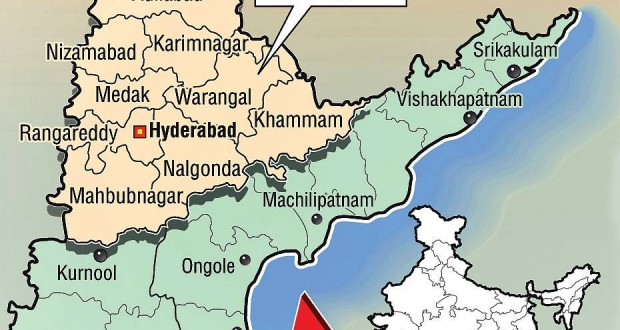1. TG and AP will have common Governor who controls law&order in GHMC.
2. AP State capital will be identified by an expert committee that would be formed within 45 days of the bill getting passed.
3. Center will take over Grey Hound training centre in Hyderabad for 3 years. These 3 years it would serve as common training centre for 2 states.
4. UPSC will serve Telangana’s public services needs till it gets a new body like APPSC which would start serving residual AP.
5. AP High Court will be shared by both TG and AP till AP gets it’s own in AP area.
6. There would be 40 MLCs for TG and 50 for AP.
7. Polavaram will be a national project and would be executed by Central Govt. in collaboration with 2 states after getting all required environment, forests and RR clearances.
8. 51% of Singareni will be held by TG and 49% by central Govt.
9. For a period of ten years, the successor state that has a deficit of electricity shall have the first right of refusal for the purchase of surplus power from the other successor State.
10. Public debit shall be apportioned in the population ratio.
11. The liability of the existing State of Andhra Pradesh in respect of any floating loan to provide short-term finance to any commercial undertaking shall be the liability of the State in whose territories the undertaking is located. Otherwise, shall be divided on the basis of the population ratio.
12. The Government of India shall have the powers to allocate both All-India Services and State government employees (including Secretariat, Directorate and HODs) to ensure smooth functioning of administration. The Government of India shall establish one or more Advisory Committees for the purpose of assisting it in this regard. However, even after the allocation has been determined, in order to meet any deficiency, officers of the All-India and other state government employees may be deputed by the Government of India from one of the two successor states to the other.
13. The Advisory Committee(s) for employee rellocation shall be appointed by the Government of India within a period of 30 days from the date of enactment of the Andhra Pradesh Reorganisation Bill 2013.
14. In order to ensure equal opportunities for quality education to all students in the two successor states, existing admission quotas in Government, Private-aided and Private-unaided professional colleges and institutions shall continue for a period not exceeding fiver years during which time the existing common admission process shall also continue.
15. The Government of India shall establish one AIIMS-type Super-Specialty Hospital-cum-Teaching Institution in the successor State of Andhra Pradesh.
16. The Government of India shall establish a Tribal university in Telangana.
17. SAIL shall examine the feasibility of establishing an integrated steel plant in Khammam district of the successor state of Telangana.
18. NTPC shall examine the feasibility of establishing a 4000 MW power facility in the successor state of Telangana.
19. Indian Railways shall examine establishing a new railway zone in the successor state of Andhra Pradesh.
20. The Government of India shall examine the feasibility of establishing a Vizag-Chennai industrial corridor along the lines of Delhi-Mumbai Industrial Corridor.
21. The Government of India shall examine the feasibility of expanding the existing Visakhapatnam, Vijayawada and Tirupati airports.
22. The Indian Railways shall examine the feasibility of establishing a Rail Coach Factory in the successor state of Telangana and improve rail connectivity in the State.
23. A Horticulture university shall be established in the successor state of Telangana.
 Telangana Talkies | Leading Telangana News, Movies & Entertainment Portal Website with the latest news from Telangana. We present to the world politics, movies, business updates from Telangana & the capital Hyderabad
Telangana Talkies | Leading Telangana News, Movies & Entertainment Portal Website with the latest news from Telangana. We present to the world politics, movies, business updates from Telangana & the capital Hyderabad

